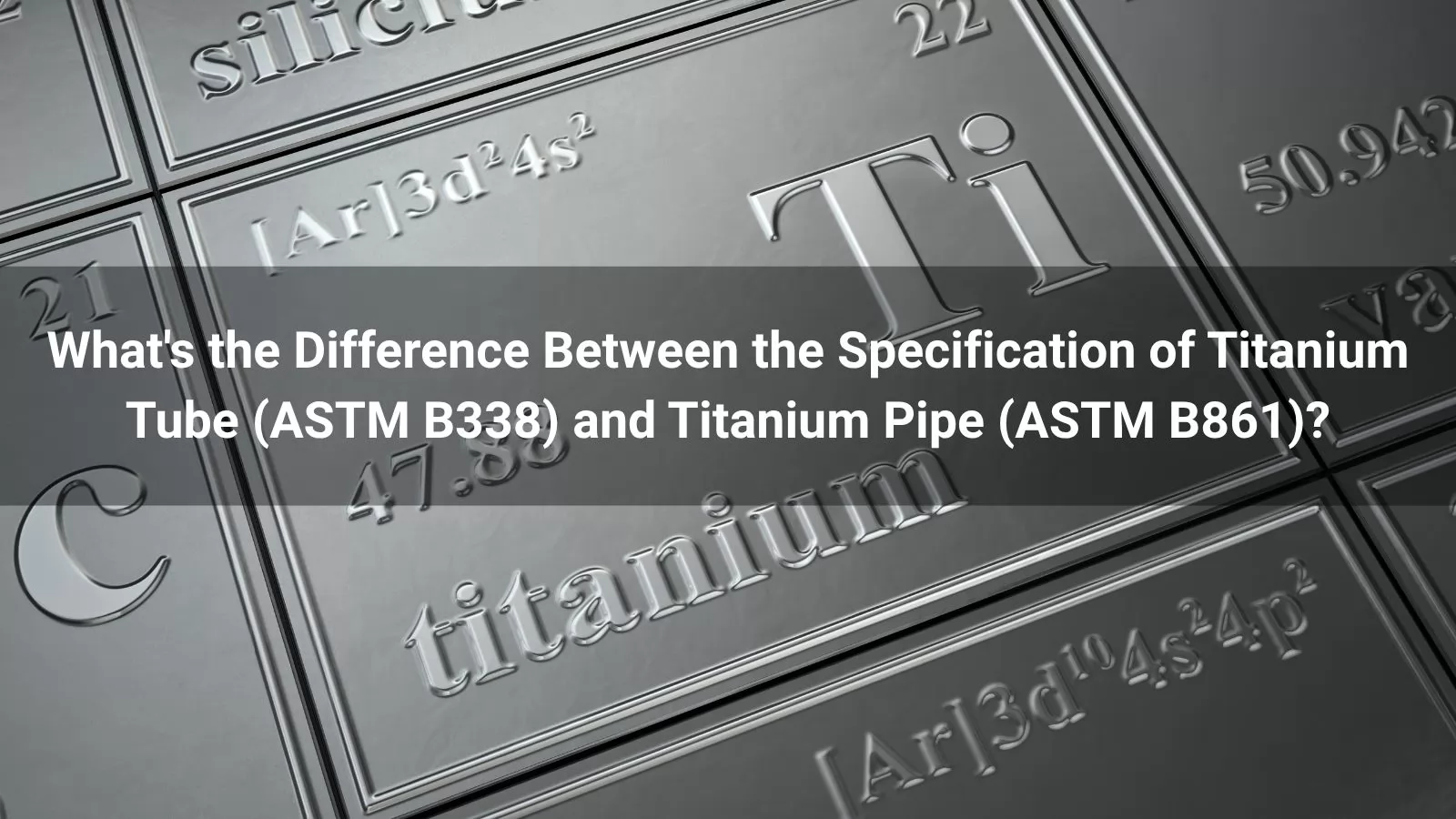


Titanium is a preferred material in high-pressure applications due to its exceptional strength-to-weight ratio, corrosion resistance, and durability in extreme environments. In industries such as energy, chemical processing, oil and gas, and aerospace, selecting the appropriate titanium form—pipe or tube—from a reliable supplier like FUGO is critical for ensuring performance, safety, and cost-efficiency. As a leading provider of high-quality titanium solutions, FUGO offers both ASTM B338 titanium tubes and ASTM B861 titanium pipes, tailored to meet stringent industry demands. The terms "pipe" and "tube" are often used interchangeably, but their specifications, ASTM B338 for titanium tubes and ASTM B861 for titanium pipes, highlight distinct differences in design, manufacturing, and suitability for high-pressure systems. This article compares these specifications, focusing on their characteristics, advantages, and optimal use cases to guide decision-making for high-pressure applications.
Titanium Tubes (ASTM B338)
ASTM B338 covers seamless and welded titanium and titanium alloy tubes intended for applications such as heat exchangers, condensers, and other systems requiring precise dimensional tolerances. These tubes are typically smaller in diameter, with a focus on exact outer and inner dimensions to ensure compatibility with fittings and high-pressure systems like hydraulics or heat transfer equipment.
● Key Features:
○ Seamless or welded construction.
○ Precise outer and inner diameter tolerances.
○ Designed for applications requiring high strength and corrosion resistance.
○ Wall thickness typically thinner compared to pipes, optimized for heat transfer or structural applications.
Titanium Pipes (ASTM B861)
ASTM B861 specifies seamless titanium and titanium alloy pipes designed for general corrosion-resisting and high-pressure fluid transport applications. These pipes are typically larger in diameter, adhering to standard pipe schedules (e.g., Schedule 40, Schedule 80) and nominal pipe sizes (NPS), prioritizing internal pressure resistance and flow efficiency over precise outer dimensions.
● Key Features:
○ Seamless construction for enhanced pressure resistance.
○ Standardized nominal pipe sizes (NPS) and schedules.
○ Engineered for structural integrity and large-scale fluid or gas transport.
○ Thicker walls compared to tubes, suited for high-pressure fluid systems.
● Pressure Requirements: Evaluate the system’s pressure rating. ASTM B861 pipes are better for high-pressure, large-scale fluid transport, while ASTM B338 tubes are suited for high-pressure systems with smaller diameters or precise fittings.
● System Design: Consider the dimensional requirements. ASTM B338 tubes are ideal for applications needing exact tolerances, while ASTM B861 pipes follow standard schedules for fluid transport.
● Cost Constraints: Balance budget with performance needs. Tubes may be more cost-effective for smaller systems, while pipes are necessary for large-scale infrastructure.
Choosing between titanium tubes (ASTM B338) and titanium pipes (ASTM B861) for high-pressure applications depends on the specific requirements of the system. ASTM B861 pipes are the preferred choice for large-scale, high-pressure fluid transport in industries like oil and gas, chemical processing, and energy, offering robust design and corrosion resistance. ASTM B338 tubes, with their precise dimensions and high-strength options, are ideal for applications requiring smaller diameters or structural integrity, such as aerospace hydraulic systems and heat exchangers. By evaluating pressure ratings, system design, and cost considerations, stakeholders can select the most suitable titanium specification to ensure performance, safety, and longevity in high-pressure environments.
For further information on high-quality titanium pipes and expert guidance, visit: https://www.fugo-tech.com/pipe/



Fugo Tech is focused on the manufacturing of clad metal plate and distributes the Stainless Steel, Titanium, Nickel Alloy, Zirconium and other non-ferrous metal pipes, fittings, flanges, and fasteners.